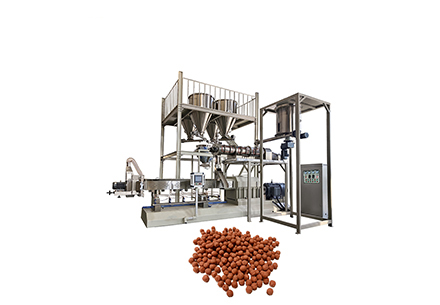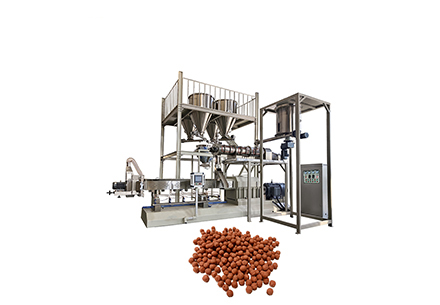Extruded aquatic feed, a green feed product with high feed intake and conversion rates, and a more environmentally friendly profile, has been increasingly accepted by the market. With the continued advancement of extrusion technology, many manufacturers have begun using extruders to produce small- particle aquatic feed, replacing the traditional process of using pellet machine to process hard-pellet aquatic feed and then crushing it. The molds used to produce small-particle aquatic feed are generally 2.0mm, 1.5mm, and 1.0mm. Some manufacturers even require even smaller particle, which are called "micro- particle " extruded feed.
The selection and control of pulverization equipment is crucial to the overall process design. The raw material pulverization fineness requirement is 80 mesh, and currently, ultrafine pulverizer is generally used.
The choice of starch raw material in the recipe. Experiments used different starch-containing raw materials to process small pellets with a die size of 1.0 mm. While maintaining the same processing parameters and other raw materials, the floating rate of corn flour-based products was found to be inferior to that of wheat flour-based products. The floating rate of wheat flour-based products reached over 98%, while that of corn flour-based products was approximately 80%. Furthermore, it was found that when corn flour was used as the starch raw material in the recipe, more fibers adhered to the blade, resulting in uneven cuts and a tendency to roughen the particle surface.
In addition, it is important to note that when producing small particle extruded feed, if the formula contains raw materials such as fluff, hair, leather, cotton, and other special fiber materials that are difficult to crush, it will cause a lot of unnecessary troubles in production, or even prevent normal production. Because even if these fluff and fiber materials are screened, there will inevitably be fluff and fiber aggregation, causing mold clogging or sticking to the cutter, affecting normal production.
Therefore, in order to ensure long-term stable production, it is recommended that the formula does not contain raw materials such as velvet, hair, leather, cotton, or other special fiber materials that are difficult to meet the grinding requirements. In addition, the raw material grinding fineness should reach 100% passing through an 80-mesh sieve, preferably, and at least 98%, and the maximum particle size of the sieve should not exceed 0.3mm. With such raw material fineness, the extruder can ensure long-term stable production. At the same time, due to the relatively fine grinding of the raw materials, the appearance of the expanded particles is also smoother and more attractive.




